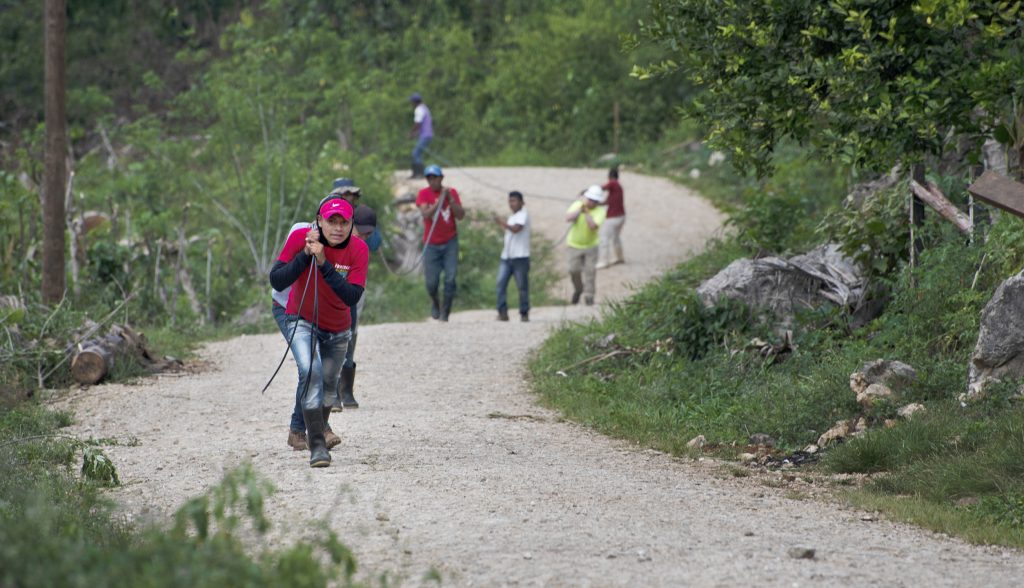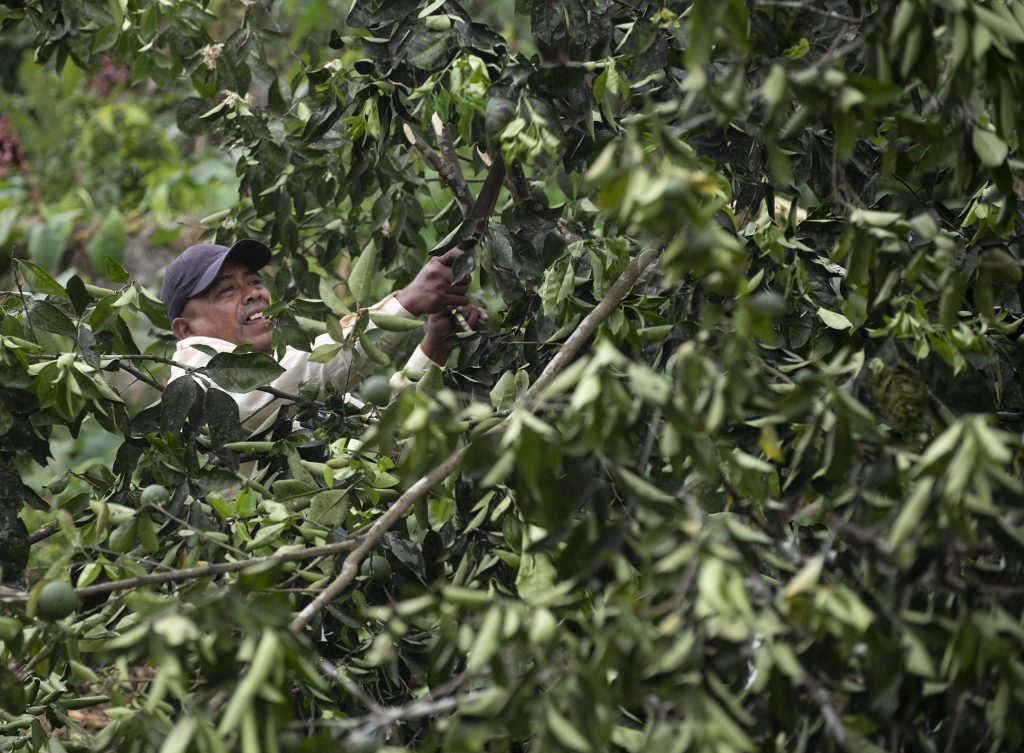Sweat Equity
Guatemalans say ‘Si, si’ to helping run power lines

The lean Guatemalan wielding the machete couldn’t be missed in his cardinal red T-shirt against the thick green brush. Leading the way up a steep hillside, he quickly cleared a path for the crew of volunteers pulling the heavy electrical service line. Together, they trudged through the tall weeds and stalks of corn to the pole beside the next home in line.
Later, that same afternoon, there he was again. Now, joining others, he helped pull more line along the main gravel road from the center of San Jacinto to the farthest poles of Project Indiana’s 2019 build in east-central Guatemala. The two-week project, which electrified some 90 homes, two churches and a school, included 14 Indiana electric cooperative lineworkers and four coordinators and support staff.
Considering the day’s heat, humidity and the hills and hollows he crossed, Christsanto Tuil Caal had all the stamina you’d expect from a guy wearing that red shirt — which touted “Willmar Cross Country.”
The logoed shirt, like so many the locals wear, had come from a periodic drop of American clothing. The 35-year-old said he grabbed the shirt because he liked its image of two hands creating a “W” (which represented the high school in Willmar, Minnesota). He didn’t know the double Cs with an arrow through them stood for the endurance running sport. When asked about the shirt, he replied with a grin that he thought “CC” was just saying, “Yes, yes” … which in Spanish, it does (“si, si”).
As the old saying goes, many a truth is told in jest.
Christsanto said “yes” — multiple times — when he heard about the American lineworkers coming to extend power lines and that volunteers were needed to help. He answered the call, though he doesn’t even live in San Jacinto. Christsanto and his family live about five minutes up the line from where the electricity originally ended. He’s enjoyed electricity at his home and small coffee plantation for almost 10 years, he said.

But the father of three said he knows electricity will benefit his neighbors — especially their children. Helping do the manual work he knows how to do so well, he said, is his way to contribute. “I do it now because I’m still strong,” he said, speaking through an interpreter in his native Mayan language, Q’eqchi.
As with the previous Project Indiana trips, the work ethic of the local folks impressed and inspired the Hoosier lineworkers. Every morning, a group of men from the village gathered outside the warehouse, awaiting the arrival of the Project Indiana team from the town of Chahal where they stayed. The locals then split up with the different crews to either build power lines or wire homes. “Carrying tools, digging holes, setting poles — anything we needed, they were right there on it,” said Jamie Bell, a construction engineer from NineStar Connect, who served as a coordinator on the trip.
San Jacinto villagers already had set 50 poles before the Indiana crew arrived in March. Without the modern equipment used by lineworkers in the States, the villagers dug the 6-foot deep holes and raised each pole, weighing some 700 pounds, into place — all by hand. Another five poles were set by hand while the Indiana crew was there.
As the local crews worked side-by-side with the Indiana lineworkers, especially while wiring the thatch-roofed homes, the church and school, they’d watch intently. And the Hoosiers imparted their skills through the Spanish- and Q’eqchi-speaking interpreters or through hand motions, broken Spanish and examples if the interpreters weren’t handy.
Wiring the homes was slow at first, and there was concern that part of the project was going to take longer than planned. But over the course of the two weeks, the two groups developed a rhythm and a sense of understanding that made the work flow smoothly.
The Indiana crews wrapped up building the power lines and wiring the homes even a couple of days ahead of time. “We would not have been able to get it done without their help,” Jamie said.
